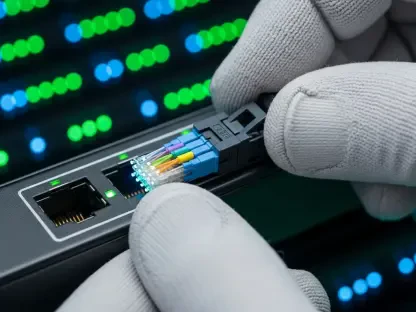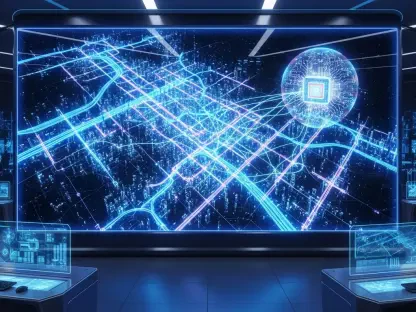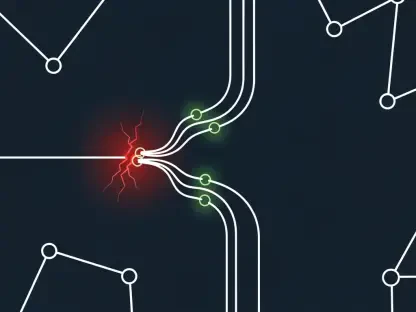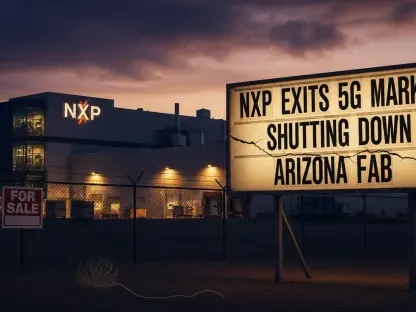Imagine navigating the Lagos–Ibadan Expressway, Nigeria’s most vital roadway, where daily traffic surges between 46,000 and 250,000 vehicles, including thousands of heavy trucks, only to find your phone call dropping or your navigation app freezing at a critical moment. This highway, connecting the commercial powerhouse of Lagos to the rest of the country, is not just a physical lifeline for commuters, travelers, and logistics but also a stark reminder of persistent digital disconnection. For many, the inability to access reliable telecom services transforms routine journeys into exercises in frustration, with dropped calls and lost internet posing risks to safety and business alike. The question lingers: why do telecommunications companies struggle to maintain consistent coverage on such a crucial route? Delving into this issue reveals a tangled web of infrastructure deficits, environmental hurdles, and systemic challenges that telcos grapple with daily. This exploration uncovers the multifaceted reasons behind the connectivity black spots that plague this essential corridor.
Infrastructure Challenges
Fibre Optic Vulnerabilities
The backbone of modern telecommunications, fibre optic cables, is indispensable for delivering high-speed data across vast distances like the Lagos–Ibadan Expressway. However, these digital lifelines are alarmingly susceptible to damage, often due to road construction activities that inadvertently sever buried lines. Reports indicate that up to 60% of network disruptions along this route stem from such incidents, where crews either lack awareness of cable locations or fail to coordinate with operators. When these cables are temporarily relocated to overhead poles during construction, they become easy targets for vandalism or accidental damage from passing vehicles and harsh weather. The result is frequent outages that leave travelers stranded without communication, highlighting a critical need for better protection mechanisms and awareness among construction stakeholders to safeguard this essential infrastructure from recurring harm.
Beyond physical damage, the challenge of maintaining fibre optics on a busy highway is compounded by logistical and coordination issues that amplify downtime. Once a cable is cut, repair teams must navigate heavy traffic and sometimes remote stretches to restore service, a process that can take hours or even days. Additionally, the lack of comprehensive mapping and documentation of cable routes often means that operators themselves struggle to pinpoint damage quickly. Vandalism adds another layer of complexity, as exposed cables are sometimes deliberately targeted, disrupting service for thousands of users in a single act. The financial burden of constant repairs and the difficulty of securing these assets in high-traffic areas underscore a deeper vulnerability in the telecom network. Addressing this requires not just technological solutions but also policy interventions to enforce stricter guidelines on construction practices near critical digital infrastructure.
Telecom Tower Fragility
Telecom towers, often referred to as Base Transceiver Stations, form the critical link that delivers mobile signals to users along highways like Lagos–Ibadan. These structures depend on a delicate balance of passive components, such as masts and generators, and active elements, including antennas and radios, to function seamlessly. A breakdown in any single part—whether a generator running out of fuel or a hardware glitch—can trigger widespread service blackouts across miles of the expressway. The logistical nightmare of dispatching repair crews to these often remote or congested locations further delays recovery, leaving users without connectivity at critical times. This fragility reveals how even minor faults in tower operations can have outsized impacts on network reliability in high-traffic corridors where consistent service is paramount.
Maintaining these towers under the pressures of a bustling highway environment presents additional hurdles that exacerbate connectivity issues. Many towers rely on diesel generators due to Nigeria’s unstable power grid, and fuel shortages or theft can knock them offline unexpectedly. Moreover, the division of responsibilities—where tower companies manage passive infrastructure and operators handle active equipment—often leads to coordination delays during emergencies. Physical access for maintenance is another concern, as heavy traffic or security risks along certain stretches can hinder timely interventions. Network optimization efforts, such as drive tests and remote monitoring, help identify issues, but on-site repairs remain unavoidable for many faults. The combination of technical complexity and environmental challenges underscores the precarious state of telecom towers, demanding innovative approaches to enhance their resilience against frequent disruptions.
Environmental and Cost Barriers
Geographical Signal Disruptions
The unique topography along the Lagos–Ibadan Expressway poses significant obstacles to maintaining uninterrupted telecom coverage for the thousands of daily travelers. Hilly terrain, dense vegetation, and sporadic buildings create natural signal “holes” that disrupt the smooth handover of connections as phones switch between towers. When towers are spaced too far apart or temporarily offline, users experience frustrating dropped calls and data loss, particularly in notorious black spot areas along the route. These environmental barriers are not easily overcome, as they require strategic placement of infrastructure in locations that may not always be feasible due to land constraints or accessibility issues. The result is a patchwork of coverage that leaves many stretches of the highway digitally isolated, affecting both personal communication and critical navigation tools.
Compounding the geographical challenges is the inherent difficulty of adapting telecom solutions to a linear, high-speed corridor like this expressway. Unlike urban areas where dense tower networks can overlap to ensure coverage, highways demand long-range setups that are more susceptible to interference from natural obstacles. Certain sections, where vegetation is particularly thick or elevation changes are abrupt, become persistent dead zones despite operators’ best efforts. The impact on safety cannot be overstated—travelers losing access to emergency services or real-time traffic updates face heightened risks on a road already known for congestion and occasional hazards. Addressing these disruptions requires not only more towers but also advanced technologies to penetrate environmental barriers, a solution that often clashes with financial and logistical realities faced by telecom providers in such expansive regions.
Engineering and Financial Trade-offs
Telcos operating along highways must navigate a delicate balance between providing adequate coverage and managing soaring operational costs, a dilemma starkly evident on the Lagos–Ibadan route. Unlike urban setups with multiple antennas for comprehensive 360-degree coverage, highway base stations often use just two antennas facing opposite directions, mounted higher to extend reach over long distances. While this design slashes costs—approximately $100,000 per site compared to $300,000 in cities—it leaves little room for redundancy. A single tower failure can create significant black spots with no immediate backup, disrupting service for countless users. This cost-saving measure reflects the harsh financial constraints telcos face, where the expense of additional infrastructure often outweighs the perceived demand for flawless connectivity in less densely populated stretches.
The financial trade-offs extend beyond initial construction to the ongoing burden of maintenance and operational expenses that strain telecom budgets. High costs for diesel fuel, essential for powering generators in the absence of a reliable grid, coupled with expenses for security against theft and vandalism, add up quickly. Each tower can consume thousands of liters of fuel monthly, and any disruption in supply or mechanical failure directly impacts service. Furthermore, the decision to prioritize affordability over robustness means fewer resources are allocated to building overlapping coverage zones that could mitigate outages. Industry experts highlight that while operators recognize the need for denser networks, the economic realities of Nigeria’s telecom market—marked by thin profit margins and high capital expenditure—force tough choices. Until these financial barriers are addressed, perhaps through public-private partnerships, comprehensive coverage remains an elusive goal on this critical highway.
Systemic and Human-Induced Issues
Power Instability and Maintenance Woes
Nigeria’s notoriously unreliable electricity grid casts a long shadow over telecom operations, with towers along the Lagos–Ibadan Expressway heavily dependent on diesel generators to stay operational. Each site consumes between 1,000 and 2,000 liters of fuel monthly, a costly necessity that is frequently disrupted by shortages, theft, or mechanical breakdowns. When a generator fails, entire sections of the highway lose connectivity, affecting thousands of users who rely on mobile services for communication and navigation. The remote nature of some tower locations exacerbates the problem, as refueling or repairs can take significant time under challenging traffic or security conditions. This power instability remains a fundamental barrier to consistent service, revealing how deeply telecom reliability is tied to broader national infrastructure challenges that are beyond the control of individual operators.
Maintenance issues further compound the struggle to keep towers online, driven by a fragmented system of responsibilities that slows down response times. Tower companies typically handle passive infrastructure like masts and generators, while operators manage active components such as antennas and radios, and separate entities oversee fibre optics. This division often leads to delays in addressing outages, as coordination among multiple stakeholders is required before action can be taken. For instance, a generator failure might require input from both the tower owner and the operator to resolve, with each party potentially facing its own logistical constraints. Along a busy corridor like this expressway, where quick fixes are critical, such inefficiencies translate into prolonged black spots. Streamlining these processes and investing in alternative power solutions could offer a path forward, but the scale of implementation remains daunting given the thousands of sites nationwide.
Vandalism and Sabotage Threats
Human interference stands as a formidable threat to telecom networks along the Lagos–Ibadan Expressway, with vandalism and sabotage contributing to a significant portion of service disruptions. Estimates suggest that 20% of outages are linked to such acts, ranging from deliberate destruction—such as setting manholes on fire in urban-adjacent areas—to accidental damage caused by farmers or utility workers digging near buried cables. These incidents not only interrupt connectivity for countless travelers but also impose heavy financial burdens on operators forced to repair or replace damaged infrastructure repeatedly. The vulnerability of exposed fibre optics and remote towers, often located in unsecured areas, makes them prime targets for theft or malicious acts, undermining even the most carefully designed redundancy systems meant to ensure network resilience.
The impact of sabotage extends beyond immediate outages to create a broader climate of insecurity for telecom assets that are critical to national communication. Bush burning, a common practice in rural areas near the highway, can inadvertently damage cables or tower equipment, while deliberate acts of vandalism often target valuable components like batteries or fuel reserves. Even when operators build multiple fibre routes to mitigate risks, simultaneous disruptions—such as construction cutting one line while insecurity blocks access to another—can collapse entire networks. The challenge of securing thousands of kilometers of infrastructure against human-induced threats calls for stronger deterrent measures, including harsher penalties for vandals and better community engagement to protect these assets. Without such interventions, the persistent threat of sabotage will continue to erode the reliability of telecom services on this vital corridor.
Government and Coordination Gaps
While the Nigerian government has taken steps to designate telecom infrastructure as Critical National Information Infrastructure, aiming to prioritize its protection, the practical impact of this policy remains limited by systemic shortcomings. With over 18,000 telecom sites across the country, the sheer scale of safeguarding these assets against damage and vandalism is overwhelming. A key issue lies in the lack of coordination with road contractors, many of whom fail to notify operators before commencing excavation work near buried fibre optics, leading to frequent cuts that disrupt service. This disconnect between public works and private telecom operations creates a recurring cycle of preventable outages, leaving travelers on the Lagos–Ibadan Expressway to bear the consequences of dropped connections and lost data at critical moments.
Addressing these coordination gaps requires a more robust framework for collaboration that goes beyond policy declarations to enforceable action on the ground. The absence of strict protocols or penalties for contractors who damage infrastructure during roadworks perpetuates a culture of negligence that telcos struggle to counter. Moreover, while the government’s recognition of telecom’s importance signals intent, the resources and mechanisms to implement rapid security responses or preventive measures are often lacking. Emerging technologies like satellite broadband hold potential as alternative solutions to terrestrial network vulnerabilities, but their high costs limit widespread adoption. Until better synergy is achieved between state agencies, contractors, and operators, systemic inefficiencies will continue to hinder progress. The path forward lies in fostering partnerships that prioritize communication and accountability, ensuring that digital connectivity matches the physical importance of Nigeria’s busiest highway.
Pathways to Connectivity Solutions
Reflecting on Persistent Challenges
Looking back, the struggle to maintain reliable telecom coverage on the Lagos–Ibadan Expressway exposed a complex interplay of technical, environmental, and human factors that repeatedly thwarted operators’ efforts. Fibre optic cables were severed by construction mishaps, telecom towers faltered under power shortages, and geographical barriers carved out stubborn black spots along the route. Vandalism and sabotage struck at the heart of network resilience, while systemic coordination failures with government and contractors deepened the crisis. Each outage reminded travelers of the fragility of digital infrastructure in a corridor so vital to Nigeria’s economy and social fabric. The billions invested by telcos were often undermined by external pressures far beyond their control, painting a sobering picture of the uphill battle fought to keep this highway connected against relentless odds.
Building a Resilient Digital Future
Moving forward, actionable steps must be prioritized to bridge the connectivity gaps that have long plagued this essential roadway. Strengthening collaboration between telcos, government bodies, and road contractors could prevent unnecessary fibre cuts through mandatory pre-construction notifications and shared mapping of infrastructure. Investing in alternative power solutions, such as solar backups for towers, might reduce reliance on volatile diesel supplies, while harsher penalties for vandalism could deter human-induced disruptions. Exploring cost-effective technologies like satellite broadband, perhaps through subsidies or partnerships, offers a potential lifeline for remote stretches. Above all, a national strategy to integrate telecom resilience into broader infrastructure planning is essential. By addressing these root causes with innovative and coordinated efforts, the vision of seamless digital access on Nigeria’s busiest highway can shift from aspiration to reality, ensuring safer and more connected journeys for all.









